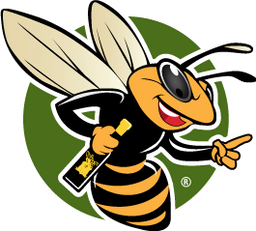Beekeeping is a rewarding yet challenging hobby that requires proper protective gear to ensure safety and comfort. Among the essential equipment for any beekeeper, the beekeeping veil stands out as a crucial item. This protective garment shields the face and neck from bee stings while providing clear visibility during hive inspections. A well-designed beekeeping veil can greatly enhance the experience of working with bees, offering confidence and peace of mind.
As the popularity of beekeeping grows, understanding the importance of a high-quality veil becomes vital. In this comprehensive guide, we’ll explore the types of beekeeping veils, their features, how to choose the right one, and answer frequently asked questions to help beekeepers make informed decisions. Whether you’re a beginner or a seasoned apiarist, investing in the right veil can make all the difference in this fascinating craft.
Overview of Beekeeping Veils
Beekeeping veils are essential protective gear designed to safeguard beekeepers from stings, particularly on the face and neck, which are vulnerable areas. They enhance safety without compromising visibility, allowing beekeepers to work confidently around their hives. Modern veils come in various styles and materials, each affecting functionality, comfort, and durability. Choosing the right veil is crucial for ensuring an enjoyable and safe beekeeping experience.
Types of Beekeeping Veils
Beekeeping veils come in various designs, each with unique benefits. Selecting the right type ensures maximum safety and comfort.
1. Full-Face Veils
Full-face veils provide comprehensive protection by covering the entire head, face, and neck. These veils typically attach to a beekeeping suit or jacket, creating a secure barrier against bee stings. Made from durable yet breathable materials, full-face veils maintain visibility while preventing bees from entering. They are ideal for beekeepers working with aggressive bee species or in high-activity environments.
2. Circular Veils
Circular veils feature a cylindrical mesh design that encircles the face and neck. These veils are often attached to a hat or helmet, offering excellent ventilation and clear sightlines. Circular veils are lightweight and comfortable, making them a great choice for long hive inspections. They’re particularly suited for beekeepers who prioritize ease of movement and a less restrictive design.
3. Hat-Style Veils
Hat-style veils integrate a wide-brimmed hat or cap with a veil that drapes around the face and neck. These veils are easy to wear and provide adequate protection for casual beekeeping activities. Hat-style veils are popular among hobbyist beekeepers who require basic protection during hive visits.
Features of Beekeeping Veils
When selecting a beekeeping veil, consider the following key features to ensure safety and comfort:
-
Material: Lightweight and breathable materials, such as cotton, nylon, or polyester, enhance comfort during hive inspections. Fine mesh screens allow for clear visibility while protecting against bee stings.
-
Size and Fit: Veils come in various sizes to accommodate different head shapes. Adjustable straps or drawstrings ensure a secure fit, preventing the veil from shifting during use.
-
Attachment Mechanisms: Elastic bands, zippers, or Velcro ensure stability and keep the veil securely attached to the suit or hat.
-
Visibility: High-quality veils offer unobstructed sightlines, allowing beekeepers to observe hive activity and handle bees effectively.
-
Durability: Reinforced seams and robust materials resist wear and tear, extending the lifespan of the veil.
-
Ventilation: Effective airflow prevents overheating during warm weather, making the veil comfortable for extended use.
Benefits of Using a Beekeeping Veil
Incorporating a beekeeping veil into your gear provides numerous advantages:
-
Protection from Stings: Veils act as a barrier, reducing the risk of painful bee stings on the face and neck.
-
Improved Visibility: Mesh designs ensure clear sightlines, enabling precise hive management and inspections.
-
Comfort in Warm Weather: Breathable fabrics and ventilated designs keep beekeepers cool and focused.
-
Increased Confidence: Wearing a quality veil allows beekeepers to work without fear, enhancing their overall experience.
-
Long-Term Durability: High-quality veils withstand frequent use and environmental challenges, making them a worthwhile investment.
Choosing the Right Beekeeping Veil
Selecting the right veil depends on individual preferences, the environment, and the level of protection required. Here are some factors to consider:
Design
-
Full-Face Veils: Ideal for beekeepers working with aggressive bees or in high-risk areas.
-
Circular Veils: Suitable for those seeking lightweight and comfortable options with excellent ventilation.
-
Hat-Style Veils: Best for casual beekeeping tasks and hobbyists requiring basic protection.
Material
Choose veils made from breathable fabrics like cotton, nylon, or polyester. These materials offer durability and comfort, ensuring effective protection against bee stings without compromising visibility or airflow.
Fit
A proper fit is essential for safety and comfort. Adjustable features like straps, drawstrings, or zippers ensure the veil stays securely in place during movement. Veils should provide ample space for clear visibility while maintaining a snug fit to prevent bees from entering.
Intended Use
Consider the type of beekeeping activity and the environment. For routine hive inspections, a lightweight circular veil may suffice. For more intensive tasks or aggressive bees, opt for a full-face veil for maximum protection.
Visibility
Clear visibility is crucial for effective beekeeping. Look for veils with fine mesh screens that provide unobstructed sightlines while ensuring safety. High-quality materials enhance the viewing experience and allow for precise hive management.
Conclusion
Beekeeping is a fulfilling activity that connects people to nature while contributing to environmental health. To ensure a safe and enjoyable experience, investing in a high-quality beekeeping veil is essential. Whether you choose the comprehensive protection of a full-face veil, the lightweight comfort of a circular veil, or the simplicity of a hat-style veil, the right gear will enhance your confidence and efficiency.
By understanding the different types of veils, their features, and how to choose the best one for your needs, you’ll be well-prepared to embark on or continue your beekeeping journey. Remember, the right equipment not only protects you but also allows you to focus on caring for your bees and enjoying this remarkable hobby.
Frequently Asked Questions (FAQs)
1. What is the purpose of a beekeeping veil?
A beekeeping veil protects the face and neck from bee stings, allowing beekeepers to work safely and confidently with their hives. It also provides clear visibility during hive inspections, enhancing overall efficiency.
2. What types of beekeeping veils are available?
There are several types of veils, including full-face veils, circular veils, and hat-style veils. Each type offers different levels of protection, comfort, and ventilation, catering to various preferences and needs.
3. How do I choose the right beekeeping veil?
When selecting a veil, consider factors such as design, material, fit, intended use, and visibility. Full-face veils are ideal for aggressive bees, while circular and hat-style veils offer lightweight options for casual use.
4. Can I wear glasses with a beekeeping veil?
Yes, most veils are designed to accommodate glasses. Ensure that the veil fits properly and provides enough space for comfortable use with eyewear. Some veils also have extra features to prevent fogging.
5. How do I maintain and clean my beekeeping veil?
Regular maintenance ensures the longevity of your veil. Clean it gently with mild soap and water, avoiding harsh chemicals that could damage the material. Allow the veil to air dry completely before storing it in a cool, dry place.



